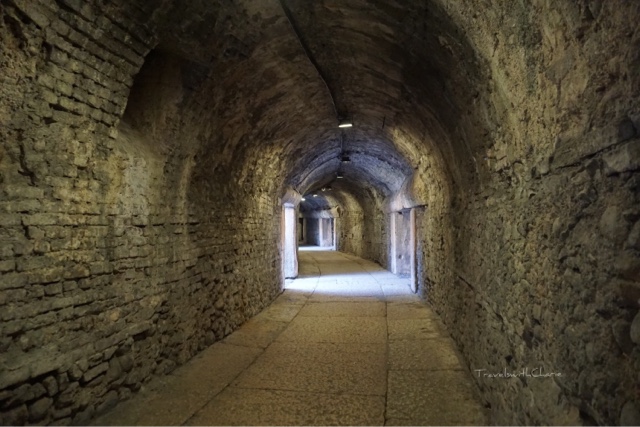The Arena of Verona is a well preserved Roman amphitheater from the 1st century. Two thousand years later, it is still in use as a venue for opera performances and concerts.
The Arena had an outer ring but it was partially destroyed by an earthquake in 1117. There is only a tiny section left of the outer ring. The debris of stones were later used to build other structures in Verona.
The image above shows what's left of the outer ring from within the Arena.
A long corridor encircles the Arena. It leads to the cavea (seating section) through the openings that shed natural light to this enclosed space.

Massive columns of stone, brick and a cement and rubble mix support the structure. Notice the pink and white hues of the block of stones sourced from Valpolicella.
The Arena di Verona is the third largest amphitheater in Italy (the Colosseum in Rome is the largest and Capua Arena is second). It was used for gladiator battles during the Roman era. There were jousts and tournaments here in the Middle Ages. In 1913, an opera was staged in the Arena to commemorate the birth anniversary of Giuseppe Verdi, a famous Italian opera composer. The Verona Opera Festival continues to draw a crowd during the summer months. The Arena can hold as many as 20,000 spectators but for safety reasons, the number allowed today has been limited to 15,000 only.
The tiers are made of Veronese marble.
How to get there:
Several trains depart from Milano Centrale to Verona Porta Nuova daily. It takes an hour and twenty minutes to get there. Porta Nuova is a long walk to the Arena. It's best to take a bus or taxi to Piazza Bra especially if you are pressed for time. Buy tickets from ticket machines inside the train station.
Images by TravelswithCharie




